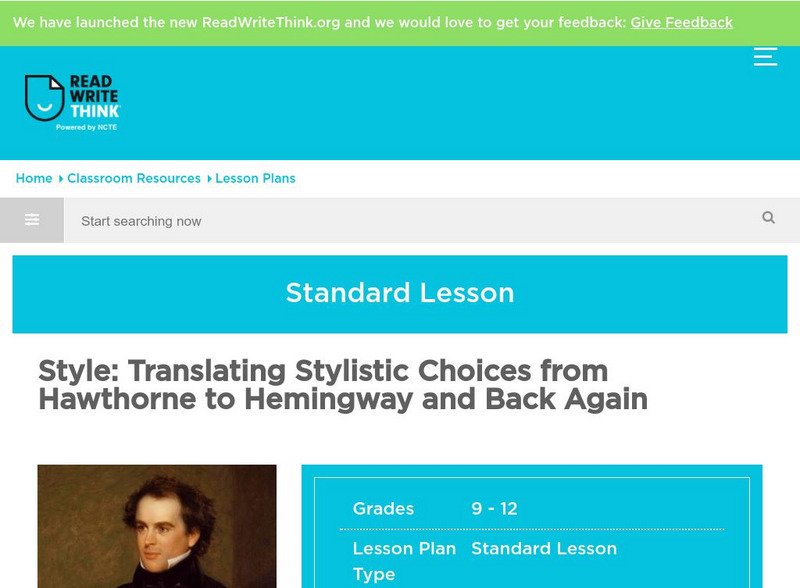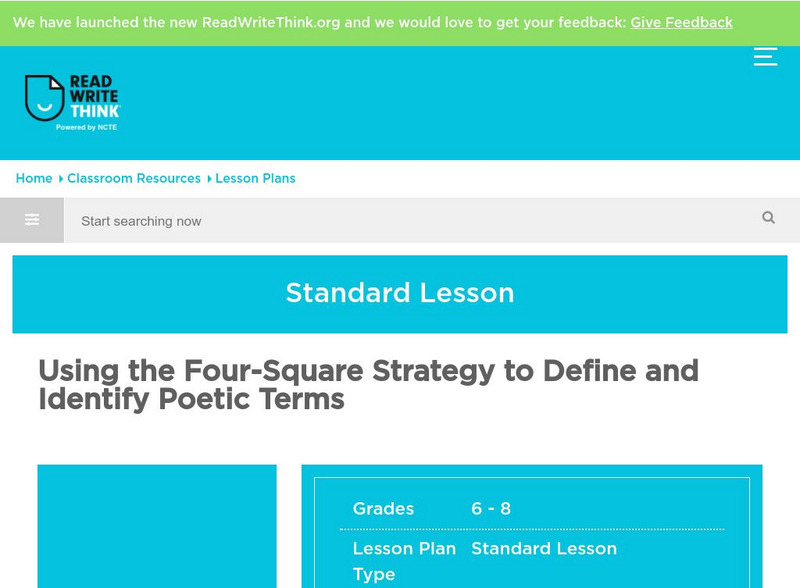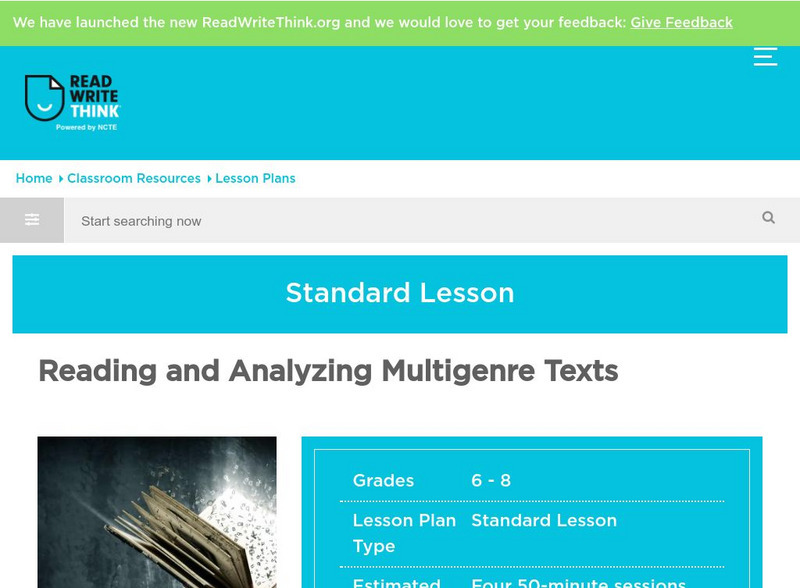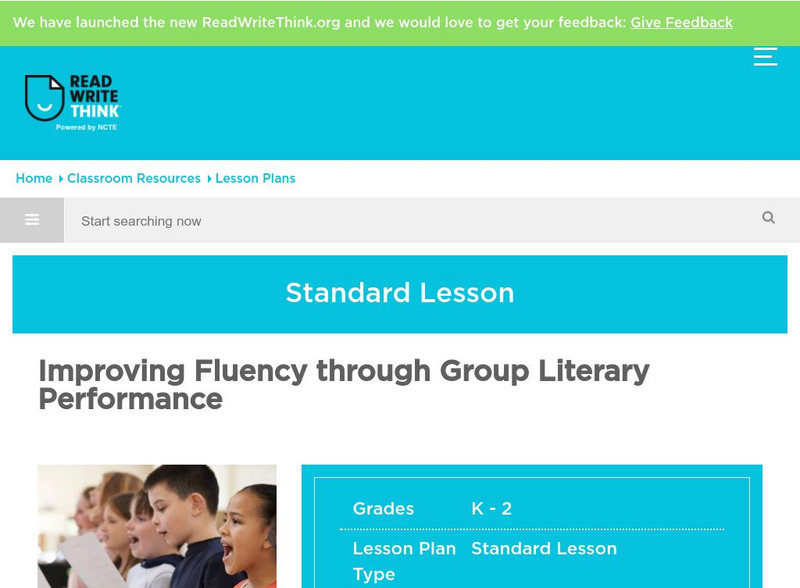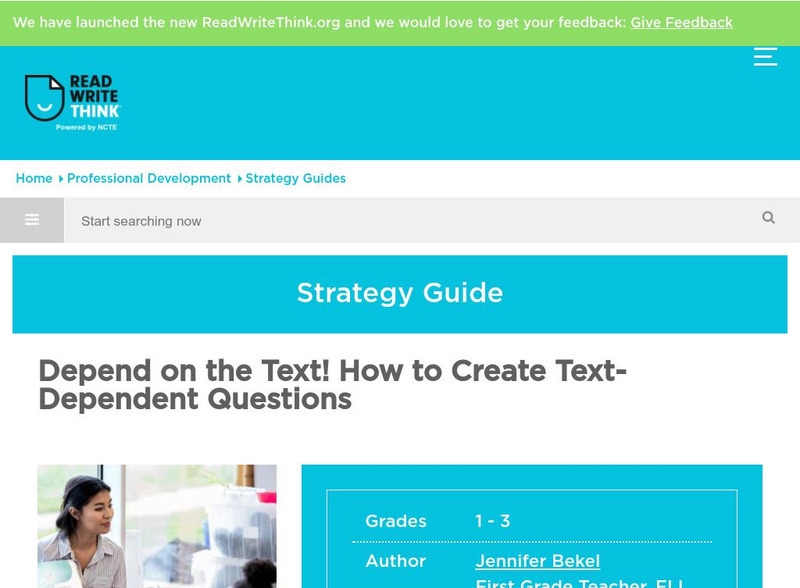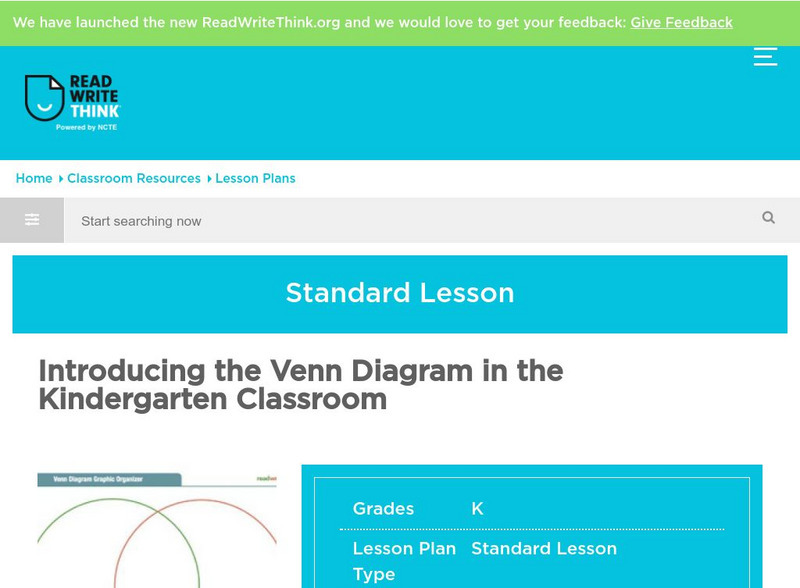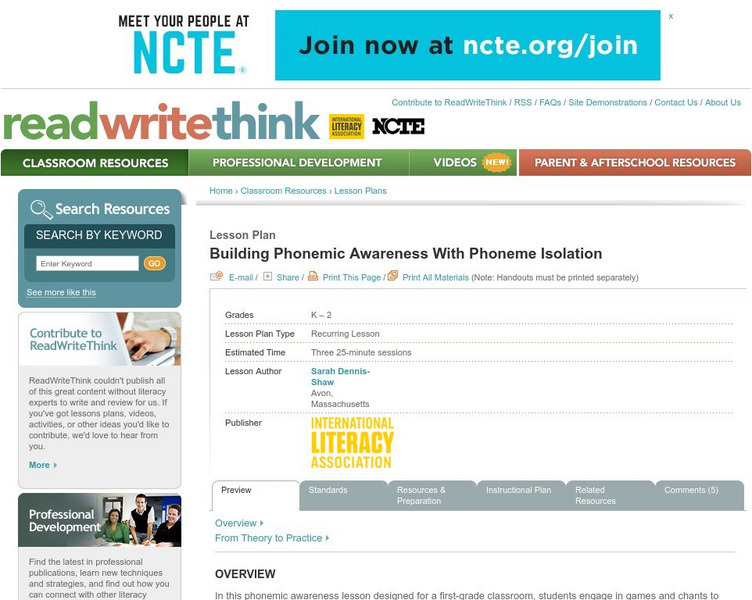Hi, what do you want to do?
ReadWriteThink
Read Write Think: Using Picture Books to Teach Setting Development
Contains plans for two or three lessons that teach about setting using picture books as models. In addition to objectives and standards, this instructional plan contains links to sites used in the lessons as well as assessment and...
ReadWriteThink
Read Write Think: Using the Prediction Strategy to Set Purposes for Reading
Contains plans for three lessons that teach a reading comprehension technique called the prediction strategy, where students predict what will happen in a story before reading. In addition to objectives and standards, this instructional...
ReadWriteThink
Read Write Think: Doodle Splash: Using Graphics to Discuss Literature
Online lesson which allows students to create a graphic in understanding a given story/piece of literature. Students create this graphic in groups and then present to the class, offering explanations as to their understanding of the...
ReadWriteThink
Read Write Think: Style Choices of Hemingway and Hawthorne
Lesson plan which helps students understand the impact of the literary element of style on a piece of writing. Students read and analyze the works of Ernest Hemingway and Nathaniel Hawthorne. L.11-12.3 Language Functions/Style,...
ReadWriteThink
Read Write Think: Poetic Form and Structure
This online lesson makes use of concrete poems to teach the structure and form of poetry. Uses a "Columbus Day," theme for the lesson, but can be used any time of the year.
ReadWriteThink
Read Write Think: Guided Comprehension: Making Connections
Lesson introduces students to the strategy of making connections. Students learn the three types of connections using a double-entry journal. A good resource for teachers.
ReadWriteThink
Read Write Think: Strategy to Define: Identify Poetic Terms
Online lesson plan offers teachers the ability to teach a "Four-square," strategy technique for poetic terms. Students explore websites and define terms such as alliteration, assonance, simile, and rhyme.
ReadWriteThink
Read Write Think: Reading and Analyzing Multigenre Texts
This lesson plan deals with the process of analyzing a variety of literary texts from poetry and letters to diary entries and works of fiction. Included in the lesson plan is an overview, practice, objectives, resources, preparation, and...
ReadWriteThink
Read Write Think: Exploring Character, Conflict, and Plot in Dramatic Tragedy
Contains plans for four lessons that ask students to change the action in the turning point of a tragedy in order to see the effect on the rest of the play. In addition to objectives and standards, this instructional plan contains links...
ReadWriteThink
Read Write Think: Alphabet Organizer
An online resource for a variety of tools and topics concerning student knowledge and learning of the English alphabet. Includes lesson plan links, online tools, interactive games, and more.
ReadWriteThink
Read Write Think: Improving Fluency Through Group Literary Performance
Students participate in shared reading, choral reading, and readers theater, using books by Bill Martin, Jr. Repeated readings and literary performances help students with their reading accuracy, expression, and rate.
ReadWriteThink
Read Write Think: Literature Circles With Primary Students, Self Selected Reading
Students respond to self-selected books in journals and talk about their books daily in small groups. The teacher guides students by offering suggestions and writing with them in dialogue journals.
ReadWriteThink
Read Write Think: Depend on the Text! How to Create Text Dependent Questions
This strategy guide focuses on writing text-dependent questions which require the student to reread the text to support their answers. It offers a list of what to do to create these questions that progress from establishing general...
ReadWriteThink
Read Write Think: Vocabulary Instruction Lesson Plan
This lesson plan uses a virtual trip to the moon to teach vocabulary practice. Included in the lesson plan is an overview, practice, objectives, resources, preparation, and more.
ReadWriteThink
Read Write Think: Book Sorting: Using Observation and Comprehension
Critical thinking, comprehension and analysis skills are the focus of this physical activity. Good beginning to teaching different ways of looking at things.
ReadWriteThink
Read Write Think: Introducing the Venn Diagram in the Kindergarten Classroom
Contains plans for short lessons that introduce the use of Venn Diagrams to kindergarten students. Uses interactive Venn Diagram exercises to make the concept easy to understand. In addition to objectives and standards, this...
ReadWriteThink
Read Write Think: Collaborative Prewriting and Drafting
A very useful activity that incorporates the process of collaboration to elementary young scholars. Students brainstorm and use prewriting strategies to write a group story.
ReadWriteThink
Read Write Think: Phoneme Isolation Building Phonemic Awareness
Contains plans for three lessons designed for first grade that teach phoneme isolation in order to build phonemic awareness. In addition to objectives and standards, these instructional plans contain links to sites used in the lessons as...
ReadWriteThink
Read Write Think: Exploring Perspective in Narrative
Interactive lesson which allows students to determine the perspective or point of view of a story character by imagining actually spending a day in their "shoes." Based on Atticus's statement in "To Kill a Mockingbird." W.11-12.3, 3a,...
ReadWriteThink
Read Write Think: Internalization of Vocabulary Through the Use of a Word Map
Students practice with words and develop both denotative and contextual knowledge through two agents-purposeful sequencing of steps and collaboration with peers.
ReadWriteThink
Read Write Think: Talking About Books to Improve Comprehension
This lesson is a conversation-starter! In this lesson, young scholars learn about striking up deep-thought conversations and staying on topic in the form of a book talk.
ReadWriteThink
Read Write Think: Buddies Create Power Point Stories
Contains plans for five lessons that ask students to create PowerPoint presentations about shared experiences like field trips or other activities. Students take pictures of what happen, and then explain the sequence of events in words...
ReadWriteThink
Read Write Think: Sequence of Events Chart
A printable graphic organizer to help students sequence events and recognize cause and effect relationships within a story. Directions on how to use this graphic organizer as well as lists of teaching ideas and related resources are also...
ReadWriteThink
Read Write Think: Thoughtful Threads: Sparking Rich Online Discussions
Today's students love chatting online with friends. This lesson combines that love with literature. Students form literature circles and have meaningful online discussions about a literary work.








